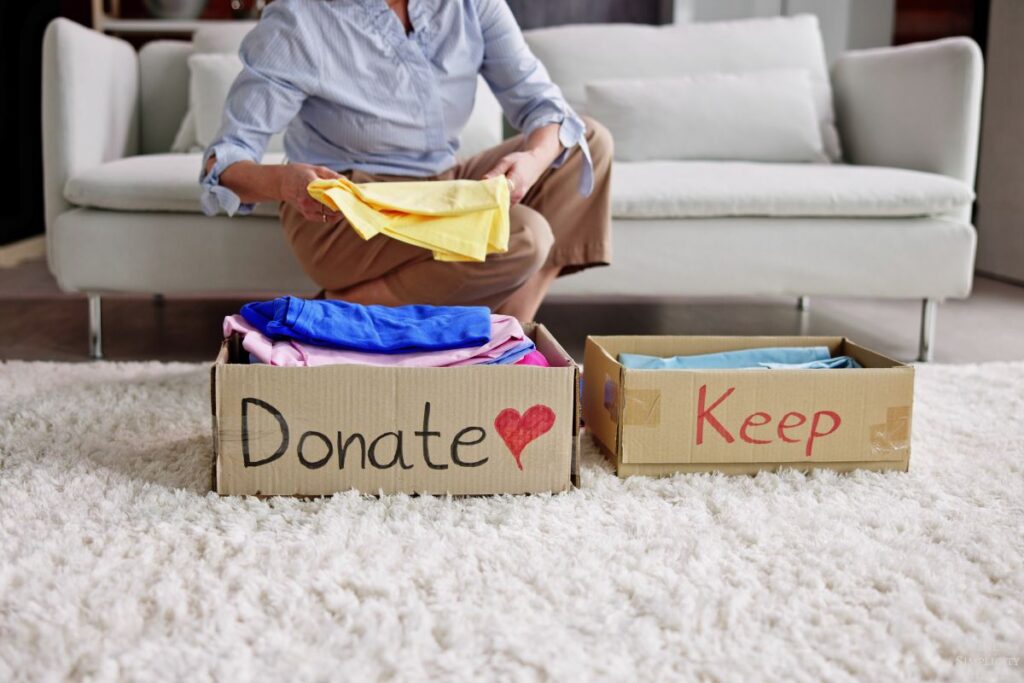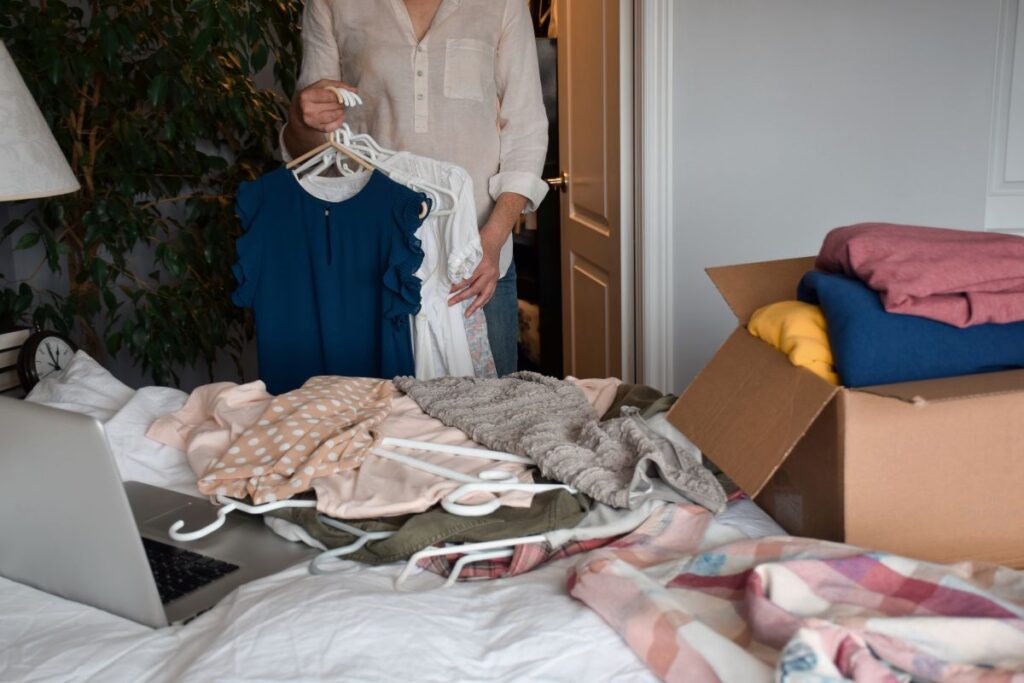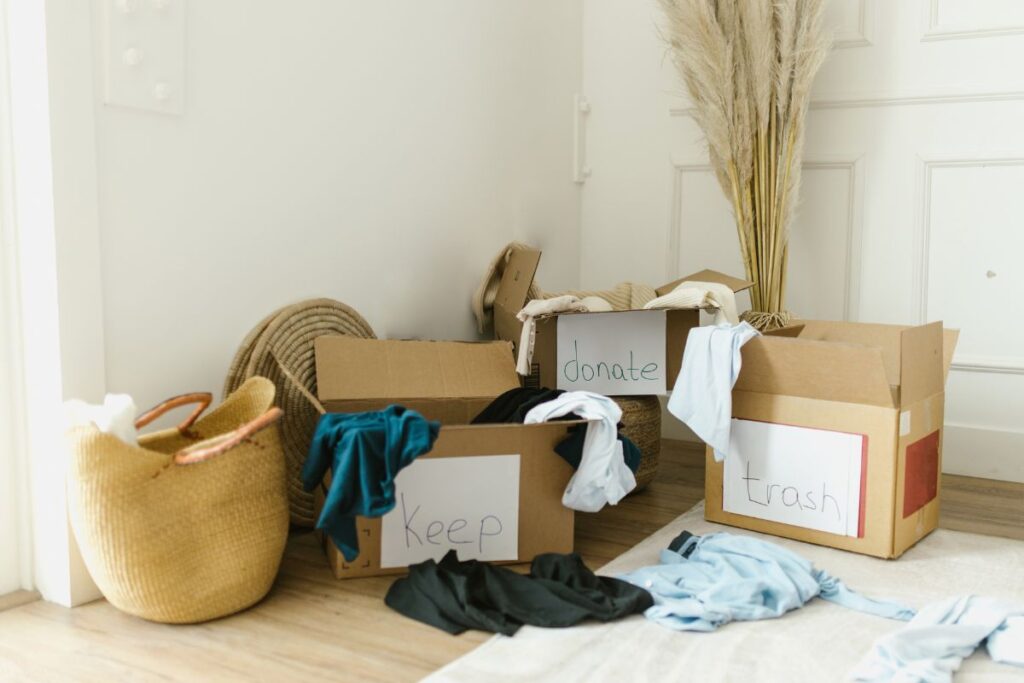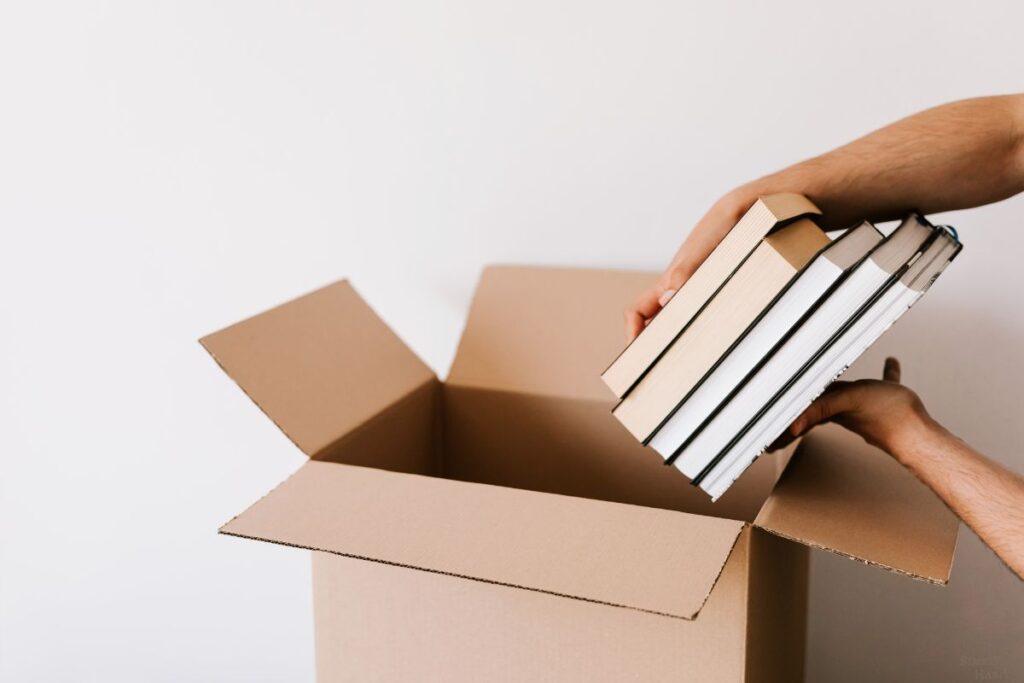Inside: Learn what the out-in-the-open decluttering rule is and how it can improve your home.
A guest post by Evelyn Long
Have you ever walked into a room and felt instantly overwhelmed—not because of the size of the space, but because of what’s in it? Counters crowded with mail, shelves packed with knick-knacks, items left out “just for a minute” that somehow stay around for far too long.
It’s amazing how quickly clutter can sneak in and take over our spaces—and our peace of mind.
A clear, functional space makes everyday life easier.
The out-in-the-open rule is a simple decluttering technique to help create a neat, tidy environment that supports your everyday routines.
Read on to learn what this rule is and how you can use it to create a calmer, more functional home.
Whether you’re just starting your decluttering journey or looking for new ways to simplify, this rule might be the gentle nudge you need to reclaim your space.

Understanding the Out-in-the-Open Decluttering Rule
There are a number of decluttering rules that can help you declutter more efficiently.
The out-in-the-open decluttering rule requires you to place everything you have out in the open and decide which items you need to keep or throw away.
The technique comes from the author-podcaster duo behind The Minimalists. They say people tend to stuff their belongings in enclosed spaces, like closets, drawers, and cabinets.
Putting things where you can’t see them is an easy way to make your spaces look superficially organized — out of sight, out of mind. However, this practice also hides the true picture of all your belongings.
Bringing all your things out allows you to face these hidden spaces head-on.
According to The Minimalists, sunlight becomes the metaphorical disinfectant for your possessions. It helps you hold on to and organize the essentials while getting rid of clutter.

How This Decluttering Rule Can Improve Your Home
Seeing everything you have, whether decluttering your entire home or one room, makes it easier to take stock of what you have. You’re more likely to ask yourself, “Do I need this?” or “Am I going to use this?”
It forces you to deal with the mess and make decisions, minimizing procrastination. This technique confronts you with how much you’ve accumulated and pushes you to take action.
The out-in-the-open technique is similar to the KonMari Method popularized by Marie Kondo. Both methods involve looking at everything you have and deciding whether to keep or discard each item.
However, the KonMari Method uses emotional resonance as the main criterion for keeping and discarding your stuff — you need to feel whether or not an item sparks joy.
The out-in-the-open decluttering rule is open to interpretation, but The Minimalists’ approach relies more on functionality and necessity when decluttering.

How to Use the Out-in-the-Open Decluttering Technique
This decluttering rule is pretty simple — dump everything out and declutter what you don’t need. If you’re new to this technique, here are five steps to get you started.
1. Pick a Space to Declutter
You can customize the out-in-the-open rule depending on how much time and energy you have on a certain day. You can immediately declutter your entire home or choose a specific room, drawer, or closet to tackle.
This allows you to declutter at your own pace. You can schedule a weekend to organize everything, or work one day or space at a time, and see your efforts accumulate.
Just be aware that trying to tackle too much at once can cause overwhelm, so for most people, focusing on one smaller area at a time tends to work best.
2. Take Everything Out
After picking a room or storage item to declutter, take everything out, no matter how small. While the idea is to be confronted by your possessions, avoid placing things in a way that creates safety hazards.
This step can also be your chance to clean your storage spaces or containers with a quick vacuum or wipe-down. It will make your space feel fresher.

3. Sort Your Items
Decide which items you’re willing to part with and which you want or need to keep. If you’re sentimental, this step may take longer, so consider setting aside plenty of time or taking breaks when you need an emotional reset or get stuck on a single item.
Look at each item individually and evaluate its place in your home. Do you use it regularly? Are you going to use it soon? Can you live without it?
You may also find items that aren’t in the right place. Maybe you find some cords and cables in your craft bin when you have a separate electronics drawer.
Now is a good time to reorganize and put your things in their proper homes.
4. Reorganize Your Things
Take the things you plan to keep and place them back into storage. This step will probably be easier since you have fewer items than when you started.
Be sure to neatly organize as you return items to their place, making often-used things accessible.
Consider adding storage solutions like shelves, bins, or racks and labels to make sorting and finding the things you need easier. You can even create designated zones for different purposes, like a drawer dedicated to electronics or a cabinet dedicated to linens and towels.
5. Declutter What You Don’t Need
It’s time to tackle the things you need to discard. Some items may be unsalvageable.
However, you can donate or sell things that are still in good condition. Drop them off at a shelter or a charity store, list them online, or do a garage sale.

Tips on Using the Out-in-the-Open Decluttering Rule
There are several ways to make the out-in-the-open rule your own.
Use a Timer
A timer is an excellent tool to keep you productive and motivated. Knowing that the timer will end makes the task much more manageable, which can be incredibly helpful if you get easily overwhelmed.
The Pomodoro technique is a popular time-based productivity method that you can use when decluttering. Set a timer for 25 minutes and focus on your decluttering project until the timer ends. Take a five-minute break, and then repeat until you finish tidying.
Take Before and After Photos
Before dumping out all your stuff, photograph the space. This initial photo provides a reference point for your progress.
When you feel unmotivated, you can look at the image and see your progress. When you finish decluttering, take an “after” photo and compare the two.

Pair It With Other Decluttering Methods
The out-in-the-open rule’s simplicity and flexibility combine well with other decluttering methods. Create hybrids with different techniques, such as the following:
- The KonMari Method: Sort based on emotion or what “sparks joy.”
- The 90/90 decluttering rule: Throw away things you haven’t used in the last 90 days or don’t plan to use in the next 90.
- The 12-12-12 organizing method: Toss 12 items, donate 12 items and return another 12 to their designated place.
- The move-out decluttering method: Pretend you’re getting ready to move and declutter the things you don’t want to take with you.
Small Changes for a Big Impact
The out-in-the-open decluttering rule is a simple technique that can make lasting impacts in your home. It helps you stay focused, turning decluttering from a stressful ordeal to a natural part of your routine. As a result, you get a calmer home and a happier household.

Evelyn Long is a home organization writer who helps homeowners and renters maintain a neat space through innovative decluttering tips. She has written for several other publications, including the National Association of Realtors and DecorMatters. She is also the editor-in-chief of Renovated Magazine, where she shares additional tips on decluttering and home organization.
Have you tried the ‘out-in-the-open’ decluttering rule in your home? Let us know how it went in the comments below.
Sign up on the form below to get weekly decluttering tips sent straight to your inbox. You’ll also get the free Your Home Decluttered Jumpstart which includes 100 easy items to declutter and 12 high-impact areas to declutter in 10 minutes.

